The accompanying measuring network also includes tools capable of measuring selected meteorological variables in a vertical profile above the city. These instruments include a passive microwave radiometer (for measuring the temperature profile), a Doppler aerosol lidar (for measuring wind profiles and aerosol layers) and a mobile telescopic meteorological mast designed for measuring temperature, relative humidity, atmospheric air pressure and wind speed and direction in the field.
The MTP-5 microwave radiometer complements the measuring network of air quality sensors by measuring the temperature in a vertical profile up to 1,000 m. It is a passive device that does not transmit anything, only receives a signal and therefore does not disturb its surroundings and can be conveniently used in urban areas. Its advantage is also independence from weather conditions. Thanks to this device, we monitor the thermal stratification of the atmosphere (see the output in Fig. 2), the properties of which also affect the air quality.
The microwave radiometer was placed on the roof meteorological station CHMI Prague Karlov on 23 February 2022 (Fig. 1). Together with the radiometer, one of the enviSENS sensor stations was also located at Karlov station.
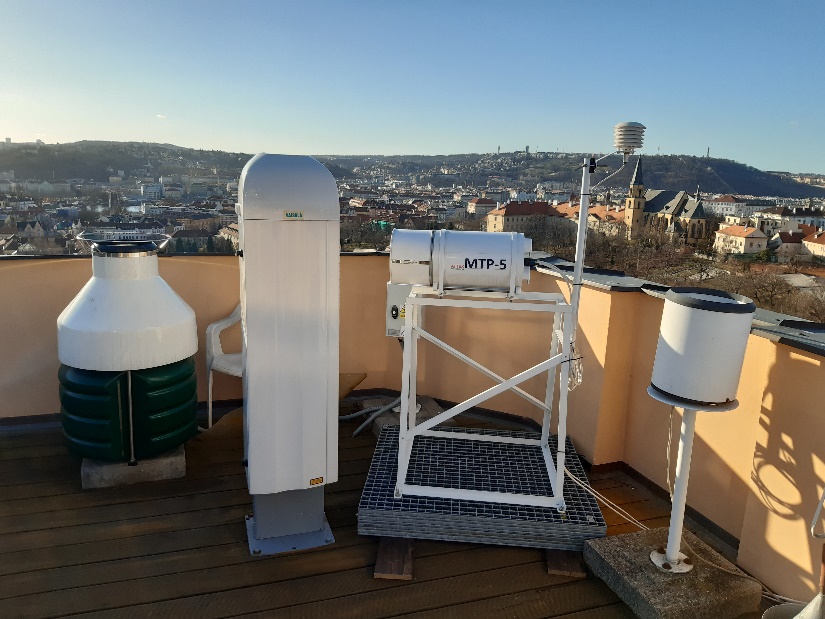 Fig. 1. Microwave radiometer MTP-5 at the meteorological station Prague Karlov.
Fig. 1. Microwave radiometer MTP-5 at the meteorological station Prague Karlov.
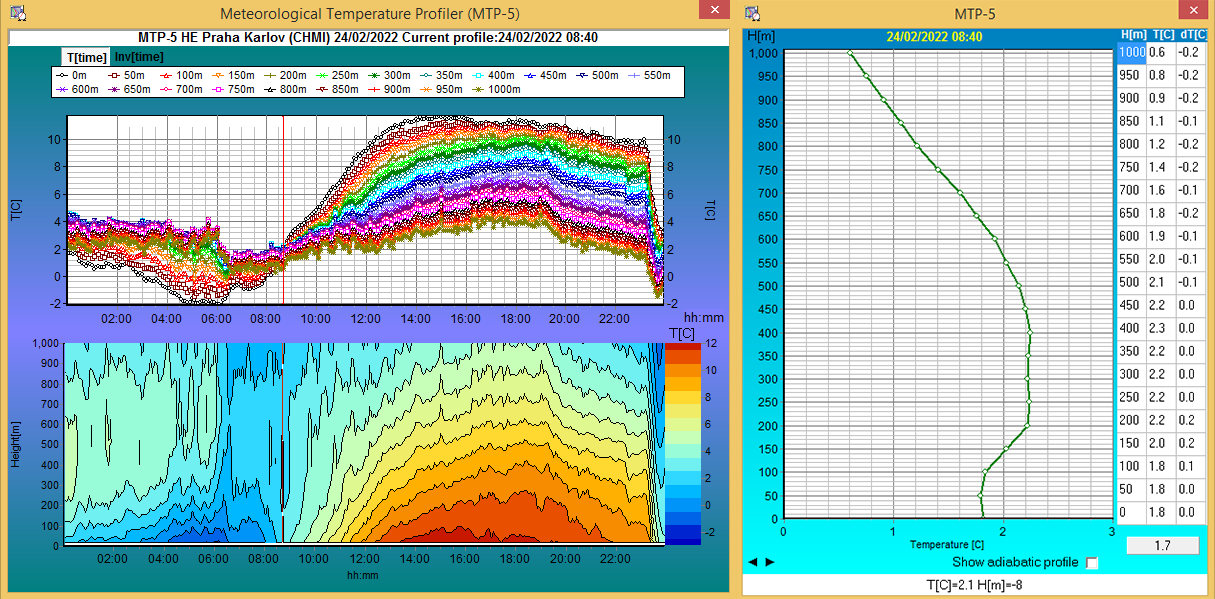 Fig. 2. Graphical output from a microwave radiometer located at the Prague Karlov station.
Fig. 2. Graphical output from a microwave radiometer located at the Prague Karlov station.
The Doppler lidar (DL) Hallo Photonics StreamLine is a device that allows you to measure the speed of air flow and the intensity of backscattering on aerosol particles using infrared light pulses. Pulses can be transmitted in different directions according to the current lidar settings - specific scanning modes are planned in special control software, while the pulses can be directed to any point in the imaginary upper hemisphere from the device. The transmitted pulses are scattered on the aerosol particles, while part of the scattered signal is captured by the lidar and evaluated for further processing. Dispersing aerosols are ubiquitous in the boundary layer of the atmosphere, so DL is able to measure flow velocities even in clear skies with an accuracy of better than 0.1 m.s-1.
In cooperation with the Prague Water Supply and Sewerage company, on March 24, 2022, the lidar was installed on the roof of one of the buildings near Legerova and Sokolská Streets. Due to the higher weight of the equipment, the lidar had to be lifted onto the roof by a crane (Figs. 3 and 4). An example of graphical output from the device is shown in Fig. 5.
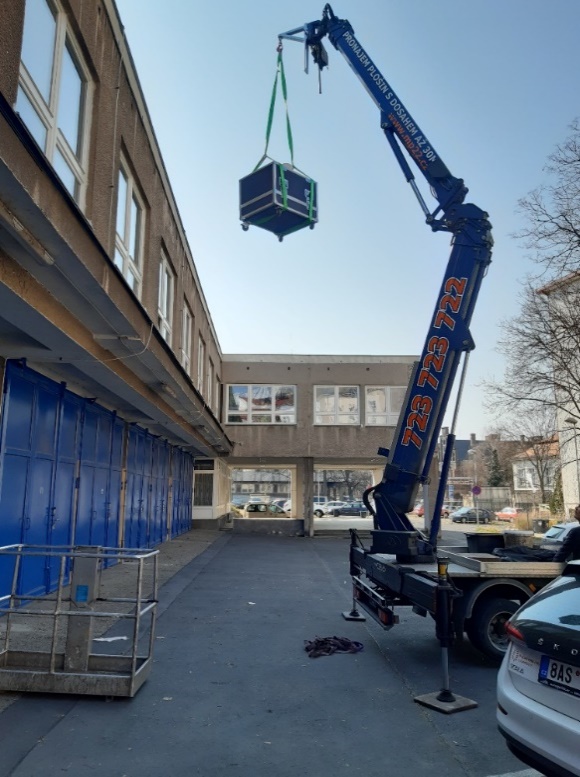 Fig. 3. Crane lifting the lidar to the roof of a selected building.
Fig. 3. Crane lifting the lidar to the roof of a selected building.
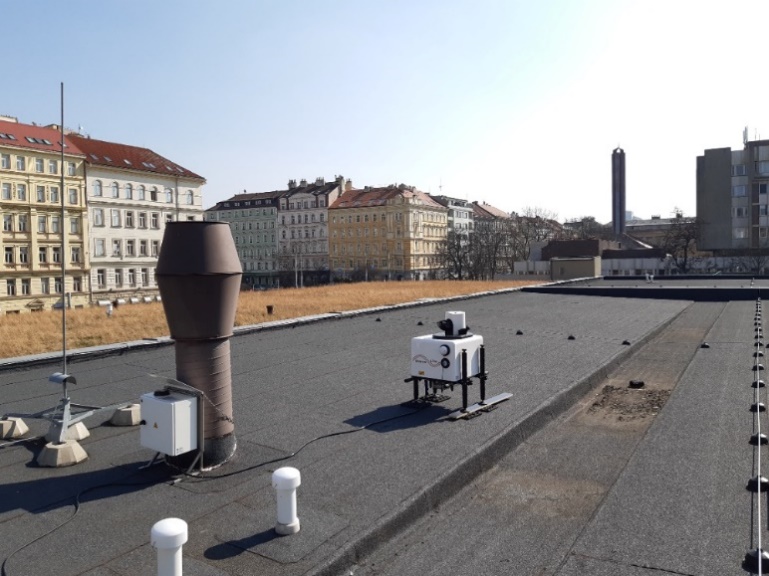 Fig. 4. Lidar installation site.
Fig. 4. Lidar installation site.
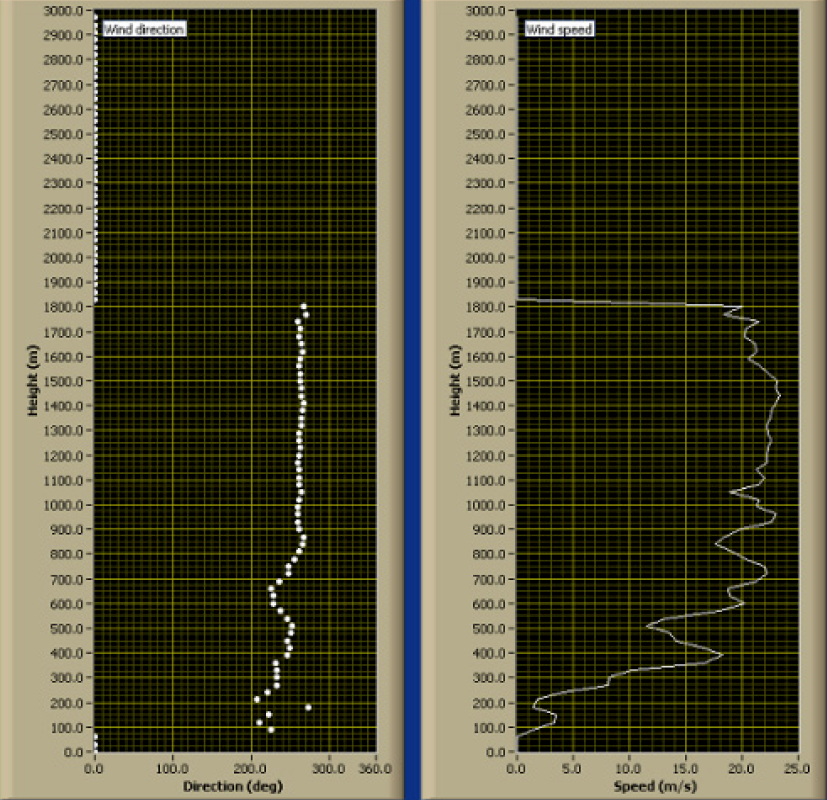 Fig. 5. Example of the graphical output from the lidar device. Left: wind direction profile. Right: wind speed profile.
Fig. 5. Example of the graphical output from the lidar device. Left: wind direction profile. Right: wind speed profile.
We are grateful to the Prague Water Supply and Sewerage company (PVK) and the Faculty of Mathematics and Physics of Charles University, which provided space for the placement of accompanying measuring equipment for the TURBAN project.